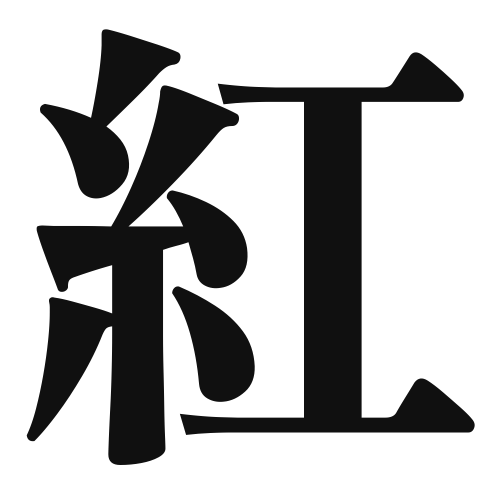1. Overview of Meaning
The kanji 紅 (pronounced “kō” or “beni”) means “red” and is often associated with a deep, vibrant shade of red. It is commonly used to describe colors, particularly in contexts related to beauty and nature.
2. Formation and Radical
Formation of the Kanji: The kanji 紅 is a phonetic compound (形声文字) that combines the radical for “silk” (糸) with the character for “harmony” (工), suggesting a connection to the rich, luxurious color of red silk.
Radical: The radical of 紅 is 糸 (ito), which means “thread” or “silk,” indicating its association with textiles and fine materials.
3. Examples of Usage
Common Words and Phrases: Some frequently used words that include 紅 are:
- 紅茶 (kōcha) – black tea
- 紅葉 (kōyō) – autumn leaves
- 紅色 (beniiro) – crimson color
Example Sentences in Daily Conversation:
- この花はとても紅いです。 (This flower is very red.)
- 秋になると、木々の葉が紅くなります。 (In autumn, the leaves of the trees turn red.)
4. Synonyms and Antonyms
Similar Kanji: A similar kanji is 赤 (aka), which also means “red” but typically refers to a brighter or more general shade of red, while 紅 often implies a deeper, richer hue.
Opposite Kanji: The opposite of 紅 is 青 (ao), which means “blue.” These two colors are often contrasted in various cultural contexts.
5. Cultural and Historical Background
Connection to Japanese Culture: The color red, represented by 紅, holds significant cultural importance in Japan. It is often associated with good fortune, happiness, and celebration, frequently appearing in traditional clothing and decorations.
Proverbs and Idioms: One common expression is 紅一点 (beni itten), which refers to a “single red dot,” used to describe a woman in a group of men, highlighting her uniqueness.
